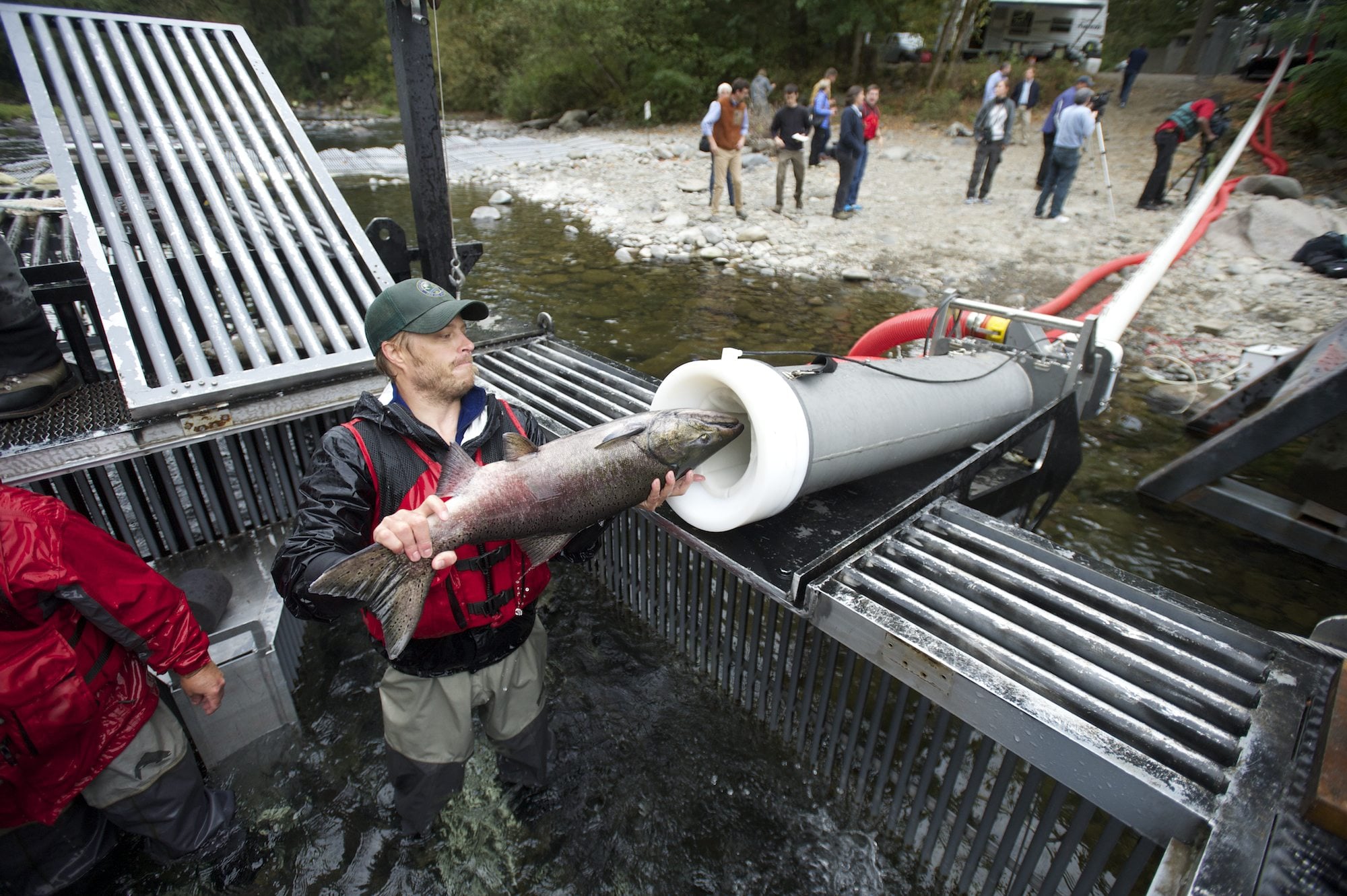SPOKANE — Some Northwest Indian tribes want in the next 20 years to achieve a long-held dream: restoring wild salmon runs above the giant Grand Coulee Dam.
The construction of Grand Coulee in the 1930s blocked salmon runs that historically ran into the millions of fish each year, killing what had been a way of life for Indian tribes in the region.
For decades, tribes were told it would be too expensive to try and restore the runs. But new technology, including “salmon cannons,” has raised hopes among tribal members.
“The cost of doing something like this is not as expensive as one thought,” said John Sirois, of Upper Columbia United Tribes, which is taking the lead in the effort. “We used to think it would cost too much.”
A decision on whether to proceed with the initial study in this effort is expected this spring.
Salmon runs on the upper Columbia and its tributaries were blocked first by Grand Coulee Dam, which was built in the 1930s, and later by Chief Joseph Dam, which was built downstream in the 1950s. Both dams were built without fish ladders and killed a 10,000-year-old Native American fishery.
Salmon have cultural and religious significance for Northwest Indian tribes, and the runs in the upper Columbia River were huge.
“From Kettle Falls and moving up, it was one of the largest runs on the entire West Coast,” Sirois said. “It’s in the millions of fish.”
Five tribes in the region have banded together in the effort to restore those runs. They are the Spokane, Coeur d’Alene, Kalispel, Kootenai and Colville tribes, said Sirois, a member of the Colvilles.
The goal is to conclude all the required studies within five years, and have salmon spawning above Grand Coulee Dam in 20 years, “within our lifetime,” Sirois said.
Grand Coulee Dam is the largest hydropower-producer in the nation, generating enough energy to supply 2.3 million households with electricity. The dam is a mile across and 550 feet tall.
Killing the salmon runs was a “tragic and historical wrong that was done to native peoples,” said Donald Michel, executive director of the united tribes.
The U.S. Bureau of Reclamation, which operates Grand Coulee, remains neutral on the effort to restore salmon runs, Tim Personius, the deputy regional director, said. But the agency does support initiating feasibility studies on the topic, he said.
“When the study is complete, Reclamation will evaluate it with regional partners and stakeholders and decide what if anything to do next,” Personius said.



